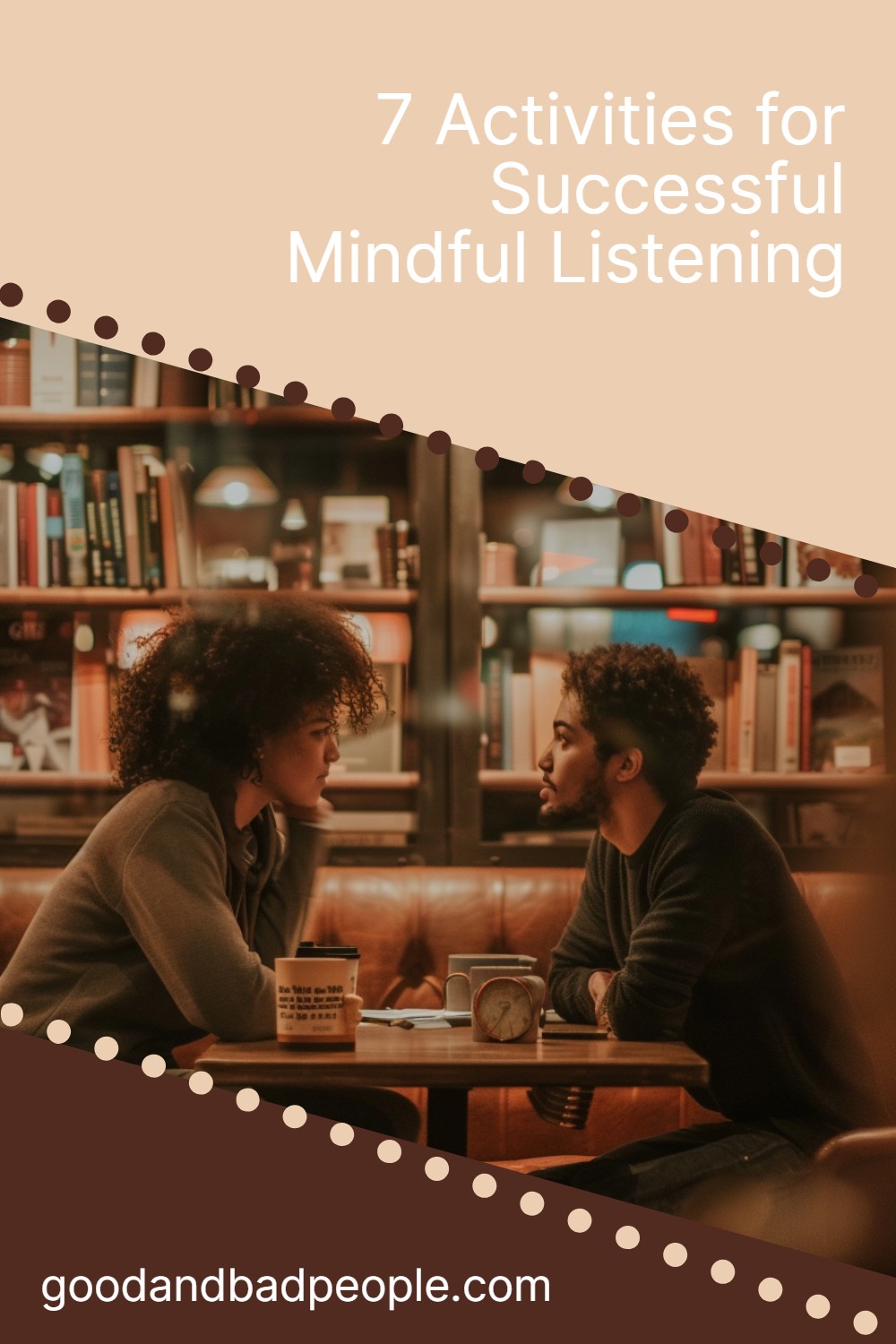Discover posts
7 Emotional Abuse Signs: How to Recognize If You're in an Abusive Relationship
Emotional abuse is often insidious and subtle, making it challenging to recognize, especially when you're emotionally invested in a relationship. Understanding the signs of emotional abuse is crucial for identifying unhealthy dynamics and taking steps to protect your well-being. Here are seven common signs to check if you suspect you might be in an emotionally abusive relationship:
1. Constant Criticism and Put-Downs
Emotional abusers frequently criticize and belittle their partners, often under the guise of "constructive criticism." They may nitpick everything you do, making you feel inadequate or worthless.
2. Gaslighting
Gaslighting is a manipulative tactic where the abuser denies or distorts facts, events, or your perceptions to make you doubt your sanity or memory. They may say things like, "You're overreacting" or "That never happened," causing confusion and self-doubt.
3. Isolation
Emotional abusers may isolate you from friends, family, or support networks to gain control over you. They may discourage you from spending time with loved ones, create conflict with your social circle, or impose rules that limit your interactions outside the relationship.
4. Blame-Shifting
Instead of taking responsibility for their actions, emotional abusers often shift blame onto their partners. They may blame you for their mood swings, mistakes, or problems in the relationship, making you feel guilty or responsible for their behavior.
5. Manipulative Behavior
Emotional abusers use manipulation to maintain power and control in the relationship. They may manipulate your emotions, decisions, or actions through guilt-tripping, threats, or emotional blackmail to get what they want.
6. Unpredictable Mood Swings
You may feel like you're walking on eggshells around the abuser due to their unpredictable mood swings. One moment they may be loving and affectionate, and the next, they could become angry, hostile, or emotionally distant without apparent reason.
7. Lack of Empathy
Emotional abusers often lack empathy and disregard your feelings, needs, or boundaries. They may dismiss your emotions, minimize your concerns, or invalidate your experiences, leaving you feeling unseen or unheard.
Recognizing the Impact
Emotional abuse can have profound effects on your mental and emotional well-being, leading to anxiety, depression, low self-esteem, and difficulty trusting others. It's essential to acknowledge these signs and take steps to protect yourself if you suspect you're in an emotionally abusive relationship.
Taking Action
If you recognize these signs in your relationship, it's important to prioritize your safety and well-being:
Trust Your Instincts: If something feels wrong or makes you uncomfortable, listen to your gut instincts.
Seek Support: Reach out to trusted friends, family members, or a therapist who can provide emotional support and guidance.
Set Boundaries: Establish clear boundaries with the abuser and enforce consequences if they continue to engage in abusive behavior.
Create a Safety Plan: If you decide to leave the relationship, develop a safety plan with steps to protect yourself and access resources such as shelters or hotlines.
Final Thoughts
Emotional abuse is never justified or acceptable in any relationship. By understanding these signs and acknowledging your worth, you can empower yourself to make informed decisions about your relationships and prioritize your emotional well-being.
Remember, you deserve to be treated with respect, kindness, and empathy in all aspects of your life.
#body #mind #soul

19 Unusual Tactics Narcissists Use to Manipulate Others
Navigating relationships can be complex, especially when dealing with individuals who exhibit narcissistic traits. Narcissists often employ subtle and sometimes unusual tactics to manipulate those around them for their own gain. Understanding these tactics is crucial for recognizing manipulation early and protecting oneself from its effects.
Here are 19 tactics commonly used by narcissists:
1. Love Bombing
Narcissists shower their targets with excessive praise, attention, and affection in the initial stages of a relationship to create an emotional bond quickly.
2. Gaslighting
Gaslighting involves manipulating someone into questioning their own perception, memory, or sanity, often by denying facts, rewriting history, or making the victim doubt their own reality.
3. Triangulation
Narcissists create drama and competition by involving a third party (real or perceived) in the relationship dynamics, causing confusion and insecurity.
4. Silent Treatment
They use withdrawal of communication or affection as a punishment or control tactic, leaving the victim feeling anxious and desperate for attention.
5. Projection
Narcissists attribute their own negative traits, emotions, or actions onto others, deflecting accountability and making the victim feel guilty or confused.
6. Manipulative Flattery
They use insincere compliments and flattery to manipulate emotions and gain favor, often exploiting vulnerabilities or insecurities.
7. Hoovering
After a period of silent treatment or withdrawal, narcissists may attempt to "hoover" their victims back into the relationship with apologies, promises, or false declarations of love.
8. Smear Campaigns
Narcissists damage the reputation of their victims through lies, gossip, or manipulation of information to discredit them and isolate them from support networks.
9. Playing the Victim
They portray themselves as victims of circumstances or others' actions to garner sympathy, deflect criticism, and manipulate others into providing support or validation.
10. Emotional Manipulation
Using guilt, shame, fear, or pity to control others' behavior or emotions, exploiting empathy and compassion for personal gain.
11. Boundary Violation
Narcissists disregard or violate others' personal boundaries, including physical, emotional, or psychological boundaries, to assert control and dominance.
12. Grandiosity
Exaggerating achievements, talents, or importance to gain admiration and validation, and to intimidate or manipulate others into compliance.
13. Love Withdrawal
They threaten to withhold love, affection, or support as a means of control, coercing others into meeting their demands or expectations.
14. Future Faking
Promising a better future or making false commitments to manipulate current behavior or gain compliance, with no intention of following through.
15. Financial Manipulation
Using money or resources to control others' decisions or behavior, such as withholding financial support or using financial dependency as leverage.
16. Intellectual Superiority
Narcissists assert intellectual superiority or expertise to invalidate others' opinions, ideas, or contributions, undermining their confidence and autonomy.
17. Playing on Insecurities
Exploiting vulnerabilities or insecurities to create dependency or manipulate emotions, such as using fear of abandonment or failure to control behavior.
18. Conditional Affection
Offering love, approval, or attention only when certain conditions or expectations are met, reinforcing compliance and suppressing individuality.
19. Charm Offensive
Using charisma, charm, and social skills to manipulate perceptions and gain admiration or trust, masking manipulative intentions behind a likable façade.
Recognizing and Responding
Recognizing these tactics is the first step in protecting oneself from narcissistic manipulation. Trusting your instincts, setting firm boundaries, seeking support from trusted friends or professionals, and prioritizing self-care are essential in navigating relationships with narcissistic individuals. By understanding these tactics and their impact, individuals can empower themselves to maintain healthier relationships and safeguard their emotional well-being from manipulation.
Understanding narcissistic manipulation tactics empowers individuals to recognize unhealthy dynamics and protect their well-being in relationships. By staying vigilant and informed, individuals can cultivate healthier relationships and maintain boundaries that promote emotional and psychological well-being.
#mind #soul #body

7 Activities for Successful Mindful Listening
Effective communication is not just about speaking; it's also about listening with intention and empathy. Mindful listening goes beyond hearing words—it involves being fully present, understanding emotions, and fostering meaningful connections.
Whether in personal relationships, professional settings, or everyday interactions, mastering mindful listening can enhance understanding and strengthen bonds. Here are seven activities to help you cultivate successful mindful listening skills:
1. Practice Active Listening
Active listening involves fully concentrating, understanding, responding, and remembering what is being said. To practice active listening, maintain eye contact, nod occasionally, and paraphrase what the speaker has said to demonstrate understanding. Avoid interrupting or thinking about your response while the other person is speaking.
2. Engage in Reflective Listening
Reflective listening focuses on understanding the speaker's emotions and perspective. Reflect back what you hear and observe about their feelings and thoughts. For example, say, "It sounds like you're feeling frustrated because..." This helps validate the speaker's experience and promotes empathy.
3. Use Nonverbal Cues
Nonverbal cues such as facial expressions, gestures, and posture can convey attentiveness and empathy. Maintain an open posture, lean forward slightly, and nod to show you're engaged. Nonverbal cues can enhance understanding and create a supportive environment for effective communication.
4. Practice Mindfulness Meditation
Mindfulness meditation cultivates awareness of the present moment without judgment. Regular meditation practices, such as focused breathing or body scans, can improve your ability to stay present and attentive during conversations. This heightened awareness supports mindful listening by reducing distractions and fostering deeper connections.
5. Develop Empathetic Listening Skills
Empathetic listening involves understanding and sharing the feelings of another person. Put yourself in the speaker's shoes and try to see things from their perspective. Acknowledge their emotions and validate their experiences without judgment. Empathetic listening builds trust and strengthens relationships by showing genuine care and understanding.
6. Ask Open-Ended Questions
Encourage meaningful dialogue by asking open-ended questions that invite the speaker to elaborate and share more about their thoughts and feelings. Avoid questions that can be answered with a simple "yes" or "no." Open-ended questions promote deeper exploration of topics and demonstrate your interest in understanding the speaker's perspective.
7. Practice Reflective Writing
Reflective writing allows you to process and articulate your thoughts and feelings about what you've heard. After a conversation, take a few minutes to jot down key points, insights gained, and any emotions evoked. Reflective writing enhances your listening skills by reinforcing understanding and helping you internalize lessons learned from interactions.
Benefits of Mindful Listening
Enhanced Understanding: Mindful listening promotes deeper comprehension of others' perspectives and feelings.
Improved Relationships: Effective communication fosters trust, respect, and stronger connections.
Conflict Resolution: Active listening and empathy reduce misunderstandings and facilitate resolution of conflicts.
Personal Growth: Developing mindful listening skills cultivates self-awareness and empathy, contributing to personal growth and development.
Incorporating Mindful Listening into Daily Life
Integrating these activities into your daily routine can transform your interactions and relationships. Start with small steps, such as practicing active listening during casual conversations or incorporating mindfulness meditation into your morning routine. Over time, mindful listening becomes a natural part of how you engage with others, leading to more meaningful connections and a deeper understanding of those around you.
By nurturing mindful listening skills through these activities, you not only improve communication but also enrich your personal and professional relationships. Embrace the journey of mindful listening as a pathway to greater empathy, understanding, and connection in every interaction you have.
#mind #body #soul

The 3-3-3 Method: A Simple Rule for Easing Anxiety
In today’s fast-paced world, many of us experience moments of stress and anxiety. Whether it’s due to work pressures, personal challenges, or the general uncertainties of life, finding effective ways to manage anxiety is crucial for maintaining mental well-being. One powerful technique that has gained popularity for its simplicity and effectiveness is the 3-3-3 Method.
What is the 3-3-3 Method?
The 3-3-3 Method is a straightforward approach designed to quickly calm anxiety and regain a sense of control. It involves three simple steps, each focusing on different aspects of your surroundings and your body’s response to anxiety.
Step 1: Acknowledge
The first step of the 3-3-3 Method is to acknowledge three things around you. These could be objects, sounds, or sensations that you notice in your immediate environment. For example, you might observe the sound of birds chirping outside your window, the feeling of your feet touching the ground, or the sight of a calming painting on your wall. This step helps to ground you in the present moment and shifts your focus away from anxious thoughts.
Step 2: Align
Next, align yourself with three parts of your body. Start by noticing your breath—take three deep, intentional breaths, focusing on the sensation of the air entering and leaving your lungs. Then, consciously relax three different parts of your body that may be holding tension, such as your shoulders, jaw, or hands. This step encourages physical relaxation, which in turn can alleviate some of the physical symptoms of anxiety.
Step 3: Appreciate
Finally, appreciate three things about yourself or your current situation. This could involve acknowledging your strengths, achievements, or simply being grateful for the present moment. By cultivating a positive mindset and recognizing your own resilience, you can shift your perspective away from anxious thoughts towards feelings of self-assurance and calm.
Why Does the 3-3-3 Method Work?
The effectiveness of the 3-3-3 Method lies in its ability to engage both mind and body in a structured yet flexible way. Here are some key reasons why this method is beneficial for easing anxiety:
Mindfulness: By focusing on specific details of your environment and bodily sensations, the method promotes mindfulness—the practice of being fully present in the moment without judgment.
Grounding Technique: Acknowledging your surroundings and bodily experiences grounds you in reality and helps to break the cycle of anxious thoughts that often center on future uncertainties or past regrets.
Physical Relaxation: Deep breathing and relaxing tense muscles activate the body’s relaxation response, reducing the physiological symptoms of anxiety such as rapid heartbeat or shallow breathing.
Positive Reinforcement: The appreciation step fosters a sense of self-worth and positivity, which can counteract feelings of inadequacy or self-doubt that often accompany anxiety.
Incorporating the 3-3-3 Method into Your Routine
Integrating the 3-3-3 Method into your daily routine can be a powerful way to manage anxiety proactively. Here are some tips for incorporating this technique into your life:
Practice Regularly: Set aside a few minutes each day to practice the 3-3-3 Method, even when you’re not feeling particularly anxious. This helps to familiarize yourself with the technique so that you can use it more effectively during moments of heightened anxiety.
Customize as Needed: Adapt the method to suit your preferences and circumstances. You may find it helpful to adjust the number of things you acknowledge or parts of your body you relax based on what feels most comfortable and effective for you.
Combine with Other Techniques: Use the 3-3-3 Method alongside other anxiety management strategies such as deep breathing exercises, mindfulness meditation, or physical activities like yoga or walking.
Final Thoughts
The 3-3-3 Method offers a practical and accessible tool for anyone seeking relief from anxiety. Whether you’re experiencing a fleeting moment of stress or navigating more persistent anxiety symptoms, this simple yet profound technique can help you regain a sense of calm and empowerment. By incorporating mindfulness, physical relaxation, and positive affirmation, the 3-3-3 Method empowers you to take charge of your mental well-being and cultivate a more peaceful state of mind in any situation.
#mind #body #soul

7 Effective Moving Meditation Techniques to Instantly Clear Your Mind
In today's fast-paced world, finding moments of calm and clarity can feel like a luxury. However, incorporating moving meditation into your daily routine can be a powerful way to cultivate inner peace and mental clarity amidst the hustle and bustle.
Unlike traditional seated meditation, moving meditation combines physical movement with mindfulness practices, making it accessible and beneficial for those who find it challenging to sit still for extended periods.
Here are seven effective techniques to help you instantly clear your mind and reconnect with your inner self:
1. Tai Chi: Originating from ancient Chinese martial arts, Tai Chi consists of slow, deliberate movements that flow seamlessly from one to the next. Practitioners focus on deep breathing and mindful awareness of body posture and alignment. Tai Chi is renowned for reducing stress, improving balance, and promoting a sense of tranquility.
2. Walking Meditation: Ideal for those who enjoy being outdoors, walking meditation involves walking slowly and deliberately while maintaining awareness of each step and breath. Whether you walk in a garden, park, or quiet neighborhood, this practice encourages mindfulness and can help clear mental clutter.
3. Qigong: Similar to Tai Chi, Qigong incorporates gentle movements, controlled breathing, and focused intention to cultivate energy (Qi) throughout the body. It is effective in reducing anxiety, enhancing concentration, and fostering a sense of well-being.
4. Yoga Flow: Yoga is not just about static poses; it can also involve dynamic sequences or flows that synchronize movement with breath. Flowing through poses like Sun Salutations (Surya Namaskar) or Vinyasa sequences promotes mindfulness, improves flexibility, and calms the mind.
5. Dance Meditation: Expressive and freeing, dance meditation encourages you to move intuitively to music or rhythmic beats while maintaining mindful awareness. It allows for emotional release, stress relief, and a deeper connection between body and mind.
6. Swimming Meditation: Water has a naturally soothing effect on the mind and body. Swimming meditation involves focusing on your strokes, breath, and the sensation of water against your skin. It promotes relaxation, enhances mood, and clears mental distractions.
7. Mindful Running or Jogging: Turn your regular run or jog into a moving meditation by focusing on your breath, the rhythm of your footsteps, and the sensations in your body. Pay attention to your surroundings while letting go of racing thoughts, making it an excellent way to reset and recharge.
Benefits of Moving Meditation:
Reduces Stress: Engaging in mindful movement lowers cortisol levels and promotes relaxation.
Enhances Mental Clarity: Clears mental fog and improves focus and concentration.
Improves Physical Health: Boosts flexibility, strength, and cardiovascular fitness.
Promotes Emotional Well-being: Releases endorphins and fosters a positive outlook.
Encourages Mind-Body Connection: Deepens awareness of bodily sensations and emotions.
Tips for Getting Started:
Start Small: Begin with short sessions and gradually increase duration as you become more comfortable.
Find Your Flow: Experiment with different techniques to discover what resonates best with you.
Practice Regularly: Consistency is key to experiencing the full benefits of moving meditation.
Stay Present: Allow yourself to fully immerse in the practice without judgment or expectation.
Incorporating moving meditation into your daily life doesn't require a significant time commitment or special equipment—just a willingness to embrace mindful movement.
Whether you prefer the gentle flow of Tai Chi, the grounding sensation of walking meditation, or the expressive nature of dance, these techniques offer powerful tools to clear your mind, reduce stress, and enhance overall well-being.
Take a moment today to pause, breathe, and reconnect with yourself through the transformative practice of moving meditation.
#mind #body #soul

10 Gorgeous Makeup and Hair Styles Every Girl Should Master
When it comes to beauty and style, mastering the art of makeup and hair can elevate your look to new heights. Whether you're preparing for a special occasion or just want to experiment with different looks, these 10 stunning makeup and hair styles are sure to inspire and impress:
### 1. **Classic Smokey Eye and Soft Curls**
Achieve a timeless look with a classic smokey eye paired with soft, voluminous curls. This combination exudes elegance and sophistication, perfect for evening events or date nights. #smokeyeye #softcurls #eveningglam
### 2. **Natural Glow and Beach Waves**
For a fresh, effortless vibe, opt for a natural makeup look with a dewy glow and tousled beach waves. This style is ideal for casual outings or beach days, giving you that sun-kissed radiance. #naturalbeauty #beachwaves #dewyskin
### 3. **Bold Red Lips and Vintage Waves**
Make a statement with bold red lips and glamorous vintage waves. This classic Hollywood-inspired look is bold yet sophisticated, making it perfect for weddings or formal events. #redlips #vintageglam #oldhollywood
### 4. **Dramatic Winged Liner and Sleek Ponytail**
Embrace drama with sharp winged eyeliner paired with a sleek, polished ponytail. This chic and modern style is great for professional settings or when you want to exude confidence and sophistication. #wingedliner #sleekponytail #powerlook
### 5. **Soft Pink Lips and Loose Romantic Updo**
Create a soft, romantic aura with subtle pink lips and a loose, tousled updo. This feminine and charming style is perfect for romantic dinners or bridesmaids' looks. #pinklips #romanticupdo #bridalbeauty
### 6. **Glowing Skin and Half-Up Half-Down Hairstyle**
Highlight your natural beauty with glowing, radiant skin and a half-up half-down hairstyle. This versatile look works well for both casual and semi-formal occasions, providing a blend of elegance and ease. #glowingskin #halfuphalfdown #everydayelegance
### 7. **Bronzed Makeup and High Bun**
Achieve a sun-kissed glow with bronzed makeup tones and a sleek high bun. This sophisticated yet effortless style is perfect for summer parties or when you want to channel beachy vibes. #bronzedbeauty #highbun #summerglow
### 8. **Bold Eyeliner and Messy Top Knot**
Make a statement with bold eyeliner and a chic messy top knot. This edgy and playful style is ideal for festivals, concerts, or whenever you want to showcase your adventurous spirit. #boldeyeliner #messytopknot #edgystyle
### 9. **Soft Glam and Cascading Curls**
Elevate your look with soft, glamorous makeup and cascading curls. This red-carpet-worthy style exudes sophistication and glamour, perfect for formal events or milestone celebrations. #softglam #cascadingcurls #redcarpetready
### 10. **Glittery Eyes and Braided Crown**
Add a touch of sparkle with glittery eye makeup paired with a whimsical braided crown hairstyle. This ethereal and enchanting look is ideal for proms, themed parties, or any occasion where you want to stand out. #glitteryeyes #braidedcrown #enchantingbeauty
### Why These Styles Work
These makeup and hair styles cater to different preferences and occasions, allowing you to express your personality and enhance your natural beauty. Whether you prefer classic elegance, bold statements, or bohemian vibes, mastering these looks will empower you to confidently showcase your style.
### Hashtags
#beautytips #makeupinspiration #hairgoals #glamorousstyles #fashiontrends #beautyinspo #makeupartists #hairstyleideas

Master These 9 Small Talk Habits to Instantly Draw People to You
Small talk often sets the stage for meaningful connections, yet many struggle with making it engaging and memorable. Whether you're at a social event, networking function, or just meeting new people, incorporating these nine small talk habits can make you instantly irresistible:
### 1. **Show Genuine Interest**
The key to captivating small talk is genuine curiosity about the other person. Ask open-ended questions that invite them to share more about themselves. For example, instead of "How are you?" try "What have you been up to lately?"
### 2. **Listen Actively**
Engage in active listening by maintaining eye contact, nodding, and showing empathy. Reflect on what they say and ask follow-up questions that demonstrate you're paying attention and interested in their perspective.
### 3. **Use Their Name**
People appreciate hearing their name—it creates a sense of familiarity and importance. Incorporate their name naturally into the conversation to establish a personal connection.
### 4. **Find Common Ground**
Look for shared interests or experiences to bond over. Whether it's hobbies, travel, or even mutual acquaintances, discovering common ground helps build rapport quickly.
### 5. **Share Personal Stories**
Authenticity is magnetic. Share anecdotes or experiences related to the topic at hand. Vulnerability fosters trust and makes you more relatable.
### 6. **Use Positive Body Language**
Non-verbal cues speak volumes. Smile genuinely, maintain an open posture, and avoid crossing your arms. Positive body language conveys warmth and approachability.
### 7. **Show Enthusiasm**
Express enthusiasm for the conversation and the person you're speaking with. Genuine enthusiasm is infectious and makes others feel valued and appreciated.
### 8. **Offer Sincere Compliments**
Compliments, when genuine and specific, can brighten someone's day and enhance rapport. Notice something unique about them or their accomplishments and express your admiration.
### 9. **End on a Positive Note**
Wrap up the conversation on a positive and memorable note. Express gratitude for the interaction, perhaps with a compliment or a statement of appreciation for their time.
### Why These Habits Work
These small talk habits go beyond superficial chatter—they foster meaningful connections by showing respect, interest, and warmth. People are naturally drawn to those who make them feel valued and understood. By mastering these habits, you'll not only enhance your social interactions but also build lasting relationships based on mutual respect and genuine connection.
### Hashtags
#socialskills #networking #communicationtips #charm #makefriends #smalltalkskills #personaldevelopment #relationshipbuilding

9 Clear Signs He Only Wants You for Your Body
Navigating the dating world can be tricky, especially when it comes to discerning genuine intentions. If you're unsure about a guy's motives, it's crucial to pay attention to the signs that indicate he might only be interested in your body. Here are nine clear indicators to watch out for:
### 1. **He Only Compliments Your Appearance**
If his compliments are always focused on your looks and rarely about your personality, achievements, or character, he might be more interested in your physical appearance than who you are as a person.
### 2. **He Avoids Deep Conversations**
A guy who’s only interested in your body won’t invest time in getting to know you on a deeper level. If conversations rarely go beyond surface-level topics, it's a red flag.
### 3. **He’s Always Pushing for Physical Intimacy**
If he consistently pressures you for physical intimacy, even when you're not comfortable or ready, his primary interest might be physical gratification rather than a meaningful connection.
### 4. **

